According to a large-scale user survey conducted by Binance, more than 80% of respondents have enabled two-factor authentication (2FA), and 84% of respondents expressed trust in protection mechanisms such as the Binance Investor Protection Fund (SAFU), demonstrating that users' security awareness has significantly improved and their confidence in the protection system led by the exchange has gradually increased.
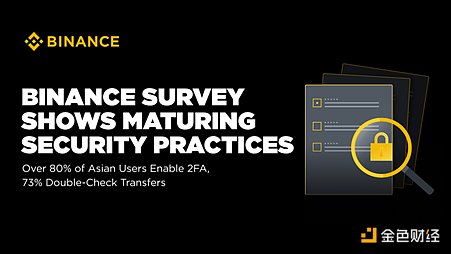
The questionnaire, titled "Asia Encryption Security Survey", collected a total of 29,847 valid responses from users in Southeast Asia, South Asia and East Asia, making it one of the most comprehensive regional observations to date. The survey provides insight into how users in the region perceive and practice security measures, and how exchanges and the industry can further support users through tools, education and proactive protection mechanisms.
From “awareness” to “action”: security habits are changing
Survey data shows that 47.2% of respondents are high-frequency traders and use cryptocurrency exchanges multiple times a day. It is worth noting that nearly 30% of the respondents entered the crypto market in the past six months, reflecting the rapid growth of the Asian market.
Despite the rapid expansion of the number of users, the survey also revealed a clear difference in security behavior: although most users have basic protection awareness, the adoption of advanced protection mechanisms is still relatively insufficient:
80.5% of respondents have enabled 2FA, indicating that users have a good understanding of basic security measures.
Only 17.6% of respondents enabled the address whitelist mechanism, and 21.5% of respondents used anti-phishing verification codes.
In addition, 34.4% of respondents store private keys on connected devices, and this proportion is as high as 42% in Southeast Asia. These actions highlight the importance of ongoing education and practical tools to simplify the security process.
It is gratifying that 73.3% of users will review the payment address before transferring money, which shows that users attach great importance to risk management in their daily operations.
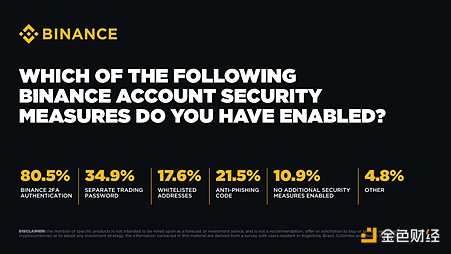
Overall, the survey shows that ongoing education is critical to driving users’ confidence in taking higher levels of security measures.
Users are more proactive and their trust in exchanges is increasing
The survey shows that although 40.7% of respondents have encountered crypto-related scams, most people show a higher ability to respond:
More than half of the respondents (53.4%) said that if they encounter a scam, they will immediately contact the exchange to freeze their assets, demonstrating basic preparedness and trust in the platform's ability to respond.
In addition, 84% of respondents said they trust protection mechanisms such as the Binance Investor Protection Fund (SAFU).
Although common fraud methods such as phishing links (69.5%), false insider information (54.9%) and fake airdrops (52%) are still appearing, the survey results show that more and more users are able to identify potential risk signals, are more rational and proactive, and are willing to use the security mechanisms provided by the platform.
From passive to active: users have higher expectations for exchange security
The survey results show that users' expectations have shifted significantly - from passive protection in the past to real-time, intelligent threat management. Users increasingly expect exchanges to proactively identify, prevent and mitigate potential threats, and respond in a timely manner before losses occur.
62.5% of respondents listed "real-time threat interception" as the primary security need, indicating a strong demand for automatic defense and early warning systems.
50.4% of respondents hope that exchanges will have device-level threat detection capabilities, such as identifying malware and prompting that the device has been hacked.
Nearly half of the respondents supported the establishment of a suspicious address database and the introduction of biometric authentication to strengthen identity protection.
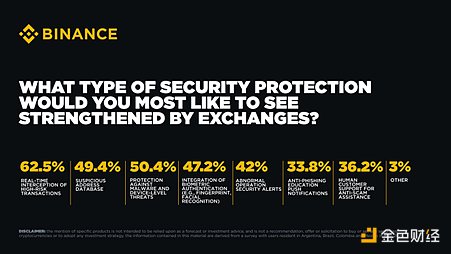
This trend reflects a shift in user mentality: exchanges are no longer just asset trading platforms, and users expect industry leaders like Binance to set new standards, especially in building smart and intuitive security systems.
Users attach the most importance to private key protection, and Binance uses MPC technology to enhance wallet security
In terms of decentralized wallets, users attach the most importance to the functions of stronger control and intelligent threat detection. The survey shows that wallets are not only a tool for storing assets, but also a key line of defense to ensure the security of assets:
62.8% of respondents listed enhanced private key protection as their most anticipated wallet feature - highlighting users' strong demand for intuitive and secure self-custody tools.
50.4% of respondents hope that wallets can provide more complete backup and recovery options to enhance their sense of security and control over their assets.
More than 40% of respondents support the integration of proactive fraud detection tools, such as phishing alerts, suspicious transaction monitoring and hacker protection features.
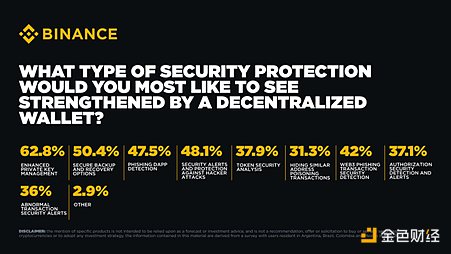
Binance meets these user needs through the "Binance Wallet", which plays an important role in the decentralization field. It uses MPC (multi-party computing) technology to eliminate the need for mnemonics and splits the private key into three encryption keys for separate management to enhance security.
Simple and localized education is key to closing the security gap
Education remains the cornerstone of user security protection. The survey shows that users hope to obtain more practical and accessible learning resources:
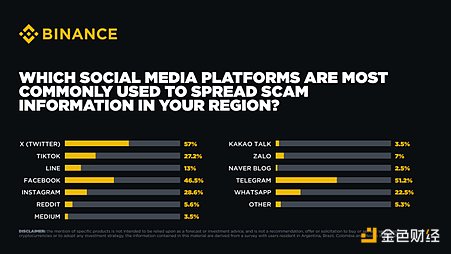
In order to promote anti-fraud education, it is also very important to effectively understand the channels through which users are most often exposed to misleading or fraudulent information. In the Asia-Pacific region, common fraud messages are concentrated on X (formerly Twitter, accounting for 57%) and Telegram (51.2%). But there are slight differences in channels across markets - the most important platform in Southeast Asia is Facebook (61.1%), while in India, WhatsApp is the key channel (42.5%).
61.3% of respondents expressed their willingness to participate in "anti-fraud simulation tests" led by exchanges to enhance security awareness, especially when these tests are combined with rewards or game mechanisms, showing that users are not only willing to learn, but also eager to learn.
The Binance security team regularly publishes easy-to-understand articles, dissecting scams such as Smishing, href="https://www.binance.com/zh-CN/blog/all/%E5%B8%81%E5%AE%89%E6%8C%87%E5%8D%97%E5%A6%82%E4%BD%95%E9%98%B2%E8%8C%83-whatsapp-%E7%BD%91%E7%BB%9C%E9%92%93%E9%B1%BC%E9%AA%97%E5%B1%80-6034195030325294549?hl=zh-CN">phishing and other complex topics, helping users fill in the knowledge gap while retaining all the key details. Welcome to check out Binance’s Security Column series to embark on an insightful learning journey and help you identify potential risks!
Binance: Comprehensively strengthen security protection
According to Chainalysis' 2025 Crypto Crime Report, wallet addresses used for illegal activities in 2024 received a total of approximately US$40.9 billion in crypto assets. Although this figure may rise further as more illegal addresses are identified, the proportion of illegal transactions in overall on-chain activity has dropped significantly, from 0.61% in 2023 to 0.14%, indicating that the proactive security measures generally adopted by the industry are working.
Binance continues to lead in security and increases investment in platform security and compliance, investing hundreds of millions of dollars to strengthen platform protection and build industry resilience.
Binance Chief Security Officer Jimmy Su said: "In 2024 alone, we have successfully prevented more than $4.2 billion in potential user losses, assisted in the recovery of $88 million in stolen or lost assets, and protected more than 2.8 million users from malicious attacks."
"As the industry continues to evolve, attackers' methods are also evolving. We are investing heavily in localized, practical and easy-to-understand anti-fraud education to meet user needs; at the same time, we are also accelerating the deployment of real-time risk detection systems and working closely with regulators and law enforcement agencies across Asia to better protect user assets."
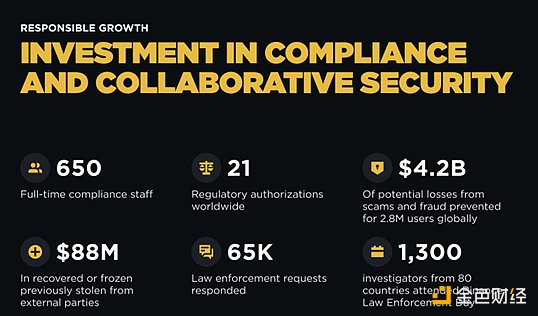
 Hui Xin
Hui Xin
 Hui Xin
Hui Xin Jixu
Jixu Jixu
Jixu Jixu
Jixu Jasper
Jasper Joy
Joy Hui Xin
Hui Xin Brian
Brian Aaron
Aaron Jixu
Jixu